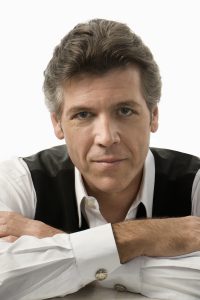I’ve written in the past about how I like to sit down at the keyboard and find out what’s going to happen next in my novel. Though some may find this hard to believe, creators of fiction are often surprised by what happens in a narrative they at least theoretically control. Such a surprise happened just this morning to me, and I thought I would share it.
Here’s what I was writing:
The sun passes behind a cloud, echoing the sudden gloom around us. “I don’t think love has much to do with anything,” I say, surprising myself at the thought. I must have sounded wistful, since Elizabeth immediately leaned toward me, still sitting upright on the couch.
“Love?” she says, her mood suddenly bright and mischievous again. “And what do you know about that?”
Diogo standing on the beach, bowing to me as I mount my horse. Diogo’s breath close to my face as I look through the spyglass in the tower. “Nothing!” I say, with what I hope is a casual shrug of my shoulders.
“Nothing?” Elizabeth teases. “I think there’s a ‘nothing’ you haven’t told us about.” She gives Beatriz a conspiratorial look.
“I-.” The barge bumps against the dock and I hear loud voices. Blessedly, we have arrived, and at least for now I won’t have to think of what to say. I look out the window and see carriages and saddled horses waiting, and I make a wild and futile wish that I will be allowed to mount one of the horses and ride off alone, away from Elizabeth’s inquisitive eyes.
Okay, so that’s what I thought was going to happen. The characters are traveling by barge from Lisbon to another royal palace at Tomar, reading a medieval Portuguese romance and daydreaming about knights in shining armor and damsels in distress. Aya is remembering a handsome young man she met the year before. I’m moving right along with them, my fingers flying over the keys.
And then, the unexpected. A character that isn’t supposed to show up until the next section of the book, set a couple of years later, is suddenly standing on the dock! Where did he come from? I don’t have the slightest idea, and I am as surprised as Aya (my narrator) to see him.
I follow behind Elizabeth as she gets off the barge. Prince Pedro is already on the dock, standing with a group of men who have arrived by horseback to wait for us. One man turns around to look where another man is pointing, and my jaw drops.
Diogo Marques. Here. Elizabeth sees my expression and her eyes go back and forth between Diogo and me. My cheeks are so hot they must be red as coals. She knows.
I look up and see Diogo staring at me. It takes him a minute to recognize that the stylishly dressed girl with the princesses is the same one who tore around Sagres with hair as wild as her horse’s mane, her hands and feet caked with beach sand.
And then he looks away. I’m not sure what I expected, but after months of acting out fantasies about knights and maidens, I suppose a little part of me thought he should fly to my side and cover my hand with kisses. I’m hurt at his response, and wonder which of the two things, Diogo’s indifference or Elizabeth’s crazy ideas about love, will be harder to handle at Tomar.
Suddenly everything changes. The scenes at the royal palace at Tomar will be very different from what I had imagined because the young man Aya has a crush on will be there–and Elizabeth is just not the type to leave it alone. The plot opens up, although I’m not sure just how yet.
There’s so much more I can do with the next ten pages than I had thought. My characters are conspiring to make my novel better than I know how to do all by myself. So Diogo, Aya, Elizabeth, I can’t wait for you to tell me what happens next! It’s too bad I won’t find out until tomorrow.


